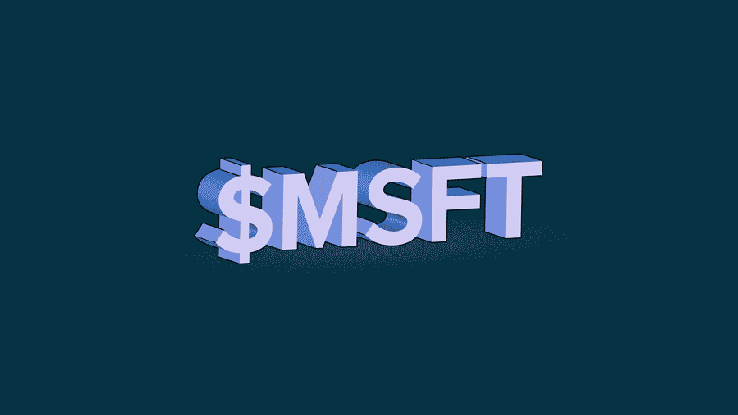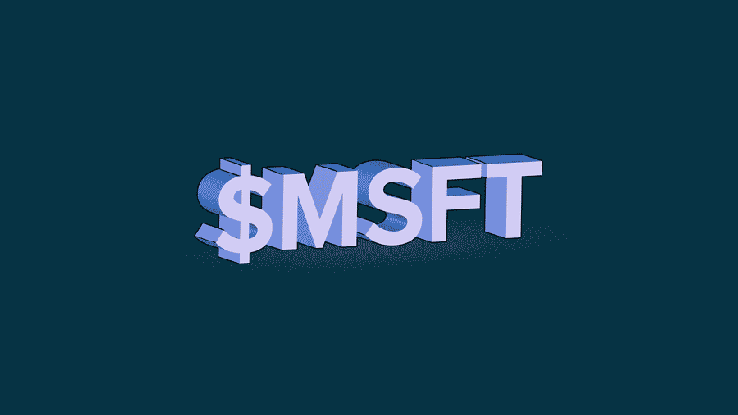

We’re taking a look at the IPOs of tech’s biggest players — firms we call the Big 5. We started with Amazon and Google. Today, we’re taking a look at Microsoft.
Microsoft went public in 1986 for $21 per share, a price that was both higher than what many expected it to command, and a figure that was reportedly higher than Bill Gates wanted.
The firm was profitable, had money in the bank and was not under pressure from external investors to go public. Essentially, Microsoft was the complete opposite of what we often see in the current tech cycle: unicorns limping across the finish line, nursing haircuts, thirsty for cash.
Our series of brief looks at the IPOs of tech’s biggest players have thus far included Amazon, which booked shocking growth and comparatively slim losses, and Google, which, before it sprouted a parent company, was merely a profitable juggernaut. Microsoft, debuting just over a decade before the bookstore, went public in a different era.
1986, after all, was the year Metallica released Master of Puppets. By 1997, when Amazon went public, Metallica was busy putting out Reload — short hair and all. If that doesn’t illustrate the different periods in which the firms went public, nothing will.

For Microsoft, we’ll start with a look at the company’s roots. We’ll then look at its IPO numbers and wrap up with notes. Let’s go!
A short pre-IPO preamble
The first milestone Microsoft lists in its IPO prospectus comes in 1975 when the firm built and sold a “BASIC Interpreter.” In 1980, the document later noted, the firm began to build for IBM’s “Personal Computer.” In 1981, the IBM Personal Computer came out with Microsoft’s MS-DOS.
In 1983, Microsoft sold its first mouse and released Word. In 1985, it started selling Excel. And, later that same year, the company started “shipping Microsoft Windows, a graphical operating environment that runs on the Microsoft MS-DOS operating system.”
In 1986, Microsoft went public.
A coda on IPO timing, venture capitalists and control
That Microsoft waited 11 years from its founding date to go public is notable. It smacks a bit of the modern unicorn, a cohort that can take far longer to go public than the prior median of 7.4 years for a software company.
But Microsoft held a couple of cards in its hand that helped it avoid going public: it never lost money on an annual basis, and it was never materially beholden to venture capitalists to help it grow (mostly). Therefore, its path to IPO was devoid of the normal pressures of falling cash reserves and impatient investors.
On the first point, a 2013 Q&A with Bill Gates that took place at Harvard is worth our time. A slightly cleaned excision of a Gates’ remarks is illustrative. Here, Gates discusses the company’s history of operational profit:
We didn’t have to build any factories, we were cash positive and we didn’t have a year where we lost money.
So that’s the profit point. Gates did also note, in the same answer, that there was a time when he was not paid by the company. Therefore, we should take the profit point with some salt. But the fact that the company could self-fund is fair, either way.
To our second point, Gates continued:
We eventually gave away, or sold, 5 percent of the company for a million dollars at a 20 million dollar valuation, just to get a venture capital company to join our board and give us some adult advice about various things, which was quite helpful. We picked one in the Valley, a guy named Dave Marquardt came on our board and did a fantastic job.
That money sat in the bank, and it’s still in the bank today, so it was not for anything to do with capital, but rather just to join the team.
To the credit of the company, I initially thought that its Crunchbase profile was wrong. It lists a single, million-dollar investment from Technology Venture Investors. And that’s what Microsoft took on before its IPO.
In short, Microsoft grew, made money, launched Windows and then went public. Let’s get to that last bit.
Private growth
In the following paragraphs, listed dates and time frames hew to Microsoft’s fiscal calendar, which ends at the close of June. In short, Microsoft’s fiscal fourth quarter of any given year is the same as the calendar second of the same. Similarly, the third calendar quarter of any year is the first quarter of Microsoft’s next fiscal year. If you don’t like it, join the club.
Heading into its IPO, Microsoft’s revenue grew quickly in the 1980s. The firm booked just under $25 million of top line in 1982, which roughly doubled in 1983, and doubled again in 1984. The firm’s growth slowed to around 40 percent in 1985.
Through all of that, and per our prior Gates notes, the company booked profit. Its net income grew from $3.5 million in 1982 to $24 million in 1985. In the six months (calendar) that closed out 1985, the firm netted a stronger $17 million.
According to its IPO prospectus, the firm had $38.2 million in cash on hand at the time it debuted, similar to the proceeds it expected to garner in its IPO ($39.4 million, before certain expenses). If those figures sound small, recall that this was the era of Master of Puppets, not Reload, and especially not St. Anger (one year before Google’s own IPO).
So what is a company worth that just broke through the $100 million revenue threshold with a long track record of profits?
Prepare to be wrong.
Public pricing
Microsoft’s IPO process has a storyline worth repeating, as it will underscore our point about the difference in eras. Microsoft did not command a Snap-esque revenue multiple in the dozens of dozens of dozens. Instead, it went for something closer to what unprofitable current-era SaaS companies would be content with.
According to a paper published in the Journal of Case Research in Business and Economics, Microsoft’s path to IPO entailed one of its founders working to depress its initial pricing. It didn’t work, really, but observe the following:
A bull market had been in progress during this time, and now the underwriters were suggesting a price range of $17-$20 per share, but the preliminary prospectus indicated a possible offer price of $16-$19 per share. (New York Times, 1986) In an unusual move for corporate executives, Gates insisted on and got the lower price range. He felt secure with a minimum price of $16, believing that at this price, there was little risk of having to lower it, and he was uncomfortable with the $20 price because it would push Microsoft’s market value above a half billion dollars, which he believed was too high.
Microsoft eventually did price above $20, landing at $21.
The company’s post-IPO valuation seems laughable compared to its then-current revenues, and, naturally, to its value today. But let’s be precise at what is funny. 1986 Fortune has the data:
Its shares, offered at $21 on March 13, zoomed to $35.50 on the over-the-counter market before settling back to a recent $31.25. Microsoft and its shareholders raised $61 million. The biggest winner was William H. Gates III, the company’s co-founder and chairman. He got only $1.6 million for the shares he sold, but going public put a market value of $350 million on the 45% stake he retains.
Just using Fortune’s rough math, 45 percent of some whole worth $350 million implies that the full canoe is worth around $777 million. At that sort of multiple, Snap wouldn’t be able to afford a Snapple.
Afters and laters
Regardless, Microsoft’s IPO did well, kicking off the public life of the third most valuable tech company in the world, and the third most valuable company in the world.
All that was to come: From the Netscape saga, to antitrust, to the dot-com excesses, to Windows XP through Windows 7, 8, and 10, Zune, Azure, Windows Phone’s failure and the success of Outlook.com and its commercial cloud, the road ahead was long.
Regardless, its foundation was already in place. Microsoft had shown that making money off software was a pretty good business.
Featured Image: Li-Anne Dias

